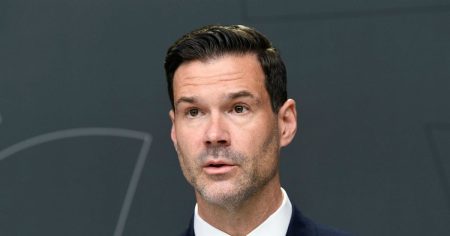The transformation of Dagens Nyheter (DN) over the past decade, under the current editor-in-chief’s leadership, reflects a broader shift in the media landscape. A decade ago, the prevailing wisdom held that online journalism should be free, supported by advertising revenue. DN, however, found this model unsustainable and embarked on a path towards reader-funded journalism. This decision, coupled with readers’ willingness to pay for quality content, has dramatically altered the newspaper’s revenue streams. While advertising once accounted for 80% of DN’s income, today, subscriptions contribute 80%, with digital subscriptions nearing 300,000 out of a total of almost 400,000. This shift has not only ensured DN’s financial stability but has also enabled substantial investment in its journalistic endeavors.
The transition to a subscription-based model underscores the value readers place on reliable and in-depth reporting. DN’s commitment to quality journalism, evidenced by the expansion of its editorial staff and the establishment of bureaus outside Stockholm, has resonated with its audience. This expansion includes new locations in Malmö, Gothenburg, Umeå, Luleå, and even into Svenskfinland, demonstrating a dedication to covering a wider range of perspectives and local issues. The editor-in-chief’s pride in this growth, along with the hiring of nearly one hundred journalists during their tenure, speaks volumes about DN’s investment in its core mission. This strategic approach has positioned DN to maintain its journalistic integrity and relevance in an increasingly competitive media environment.
Despite the digital revolution, the future of DN’s print edition remains secure, contingent upon maintaining cost-effective production and distribution. While the online platform has become increasingly important, the print newspaper still holds a place in DN’s strategy. The editor-in-chief acknowledges the need for ongoing evaluation of the print edition’s viability, emphasizing the importance of optimizing processes to ensure its long-term survival. This balanced approach recognizes the evolving media consumption habits while acknowledging the continued relevance of the traditional print format for a segment of DN’s readership.
Looking ahead, the editor-in-chief identifies the threat to press freedom as the most critical journalistic issue. Citing the global decline of democracy and the rise of anti-media sentiment, exemplified by the Trump presidency, they express concern about the potential for attacks on individual journalists. This concern is echoed by American colleagues who have witnessed firsthand the escalating hostility toward the press. The editor-in-chief’s focus on this issue highlights DN’s commitment to upholding the principles of a free press and the vital role of journalism in a democratic society.
Reflecting on their tenure, the editor-in-chief expresses regret over the handling of staff reductions during an earlier restructuring period. Acknowledging that the treatment of departing employees was not always fair, they emphasize the importance of improved collaboration with union representatives, a lesson learned and implemented in subsequent years. This candid reflection demonstrates a commitment to fostering a more supportive and respectful work environment within DN.
Finally, the editor-in-chief addresses the transformative potential of artificial intelligence (AI) in journalism. While recognizing the significant impact AI will have, comparable to the advent of the internet and smartphones, they remain confident that human-driven, on-the-ground reporting will remain invaluable. Citing the example of DN’s correspondents reporting from Damascus, they emphasize the irreplaceable nature of firsthand experience and human judgment in gathering news and providing context. This perspective suggests that while AI will undoubtedly play a role in the future of journalism, it is unlikely to replace the core value of human reporters and their ability to provide nuanced and insightful coverage of complex events.














